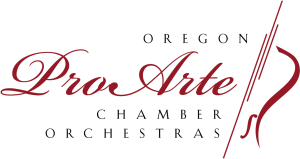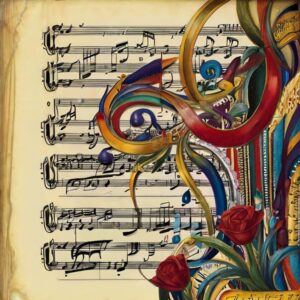Art songs, dear music lover, are like hidden gems in the treasure trove of vocal classical music. These little marvels, often overshadowed by grand operas and sprawling oratorios, deserve every bit of attention we can give them.
What Exactly Are Art Songs?
An art song is a form of vocal music composition that typically features a solo voice accompanied by piano. This genre stands out for its intricate and nuanced approach to blending music and poetry. The lyrics of art songs are usually derived from poems, and composers pay meticulous attention to setting these texts to music in a way that enhances and complements the poetic content. Unlike popular music, where the emphasis might often be on the melody or the beat, art songs strive to achieve an exquisite balance between the significance of the music and the meaning embedded in the poetry. This results in a highly intimate and expressive form of music where melody and lyrical meaning come together in perfect harmony, creating a powerful and evocative artistic experience.
Expressing the Unspoken
Art songs masterfully capture the subtleties and nuances of human emotion and thought, offering listeners a powerful and intimate form of musical expression. One of the defining features of art songs is their reliance on poetry, which allows them to delve deeply into themes and ideas that larger-scale musical works might only touch upon superficially. Through the rich and expressive medium of poetry, art songs can explore a wide range of subject matter, from fleeting, ephemeral feelings to the intricate beauties of nature, and even the complexities of inner emotional and psychological conflicts. The combined power of evocative words and finely-tuned music makes art songs a kind of musical confessional, where the subtlest shades of human experience can be articulated and appreciated. These compositions often offer insight into the human psyche, revealing thoughts and emotions that might otherwise remain unspoken. Art songs provide a unique space where the deepest aspects of human consciousness and emotion can be expressed with clarity and intensity, making them an invaluable and enriching form of musical art.
The Collaboration of Music and Poetry
A defining characteristic of art songs is their seamless and intricate fusion of text and melody. This unique blend is achieved through the meticulous selection of poetry by composers, who ensure that the music does more than merely accompany the words—it enhances and elevates the text to new expressive heights. The relationship between the poetry and the music in art songs is one of deep interdependence; the melodies, harmonies, and rhythms are crafted to perfectly complement and reflect the emotional tone and narrative of the poem. Exemplifying this profound collaboration is the work of Robert Schumann, a composer who was particularly adept at merging music with literary content. Schumann often chose poems by esteemed writers such as Heinrich Heine and Joseph von Eichendorff, selecting texts that resonated deeply with him. He then composed music that mirrored the moods and themes of these poems with uncanny precision and illuminated new dimensions within the verses. Through his compositions, Schumann was able to highlight subtle emotional nuances, underlying tensions, and unspoken sentiments that might not be immediately apparent in the poem alone. This careful and deliberate interplay between text and music allows art songs to offer a richly layered and multifaceted artistic experience, where each element enhances and deepens the other. In this way, art songs stand as a testament to the extraordinary potential of collaboration between music and poetry, creating works of art that resonate on both intellectual and emotional levels.
Voice and Piano
In art songs, the piano is far from being just a mere backdrop; it is a full-fledged partner and an equal contributor to the musical narrative. This collaboration between voice and piano is essential in creating a balanced and dynamic performance. The role of the piano in art songs is multifaceted and versatile—it can set the scene, establish the atmosphere, reflect the emotional landscape, and even participate actively in the storytelling. By using a wide range of musical techniques, the piano works in harmony with the vocal part to create a rich and immersive tapestry of sound.
A prime example of this intricate interplay can be found in Franz Schubert’s “Der Erlkönig,” where the piano part plays a crucial role in conveying the drama and urgency of the narrative. In this piece, the relentless and rapid piano motif masterfully mimics the frantic galloping of a horse, adding layers of tension and excitement to the text. This musical depiction of the horse’s gallop enhances the terror and urgency conveyed in the poem and immerses the listener in the harrowing journey of the characters. The piano’s repetitive and driving rhythm complements the vocalist’s dramatic delivery, creating a powerful and engaging experience that tells the story on multiple levels.
Such synergy between voice and piano is a hallmark of art songs. The piano provides harmonic support or accompaniment; interacts with the singer, offering counterpoint and commentary, echoing vocal lines, and sometimes even introducing contrasting themes. This dynamic relationship allows for a deeper emotional resonance and a more profound expression of the text’s meaning. Through this effort, art songs achieve a unique and compelling musical expression that captivates and moves audiences, demonstrating the piano’s indispensable role in the genre’s success and enduring appeal.
Broadening the Artistic Horizon
Composers of art songs draw from a vast array of linguistic and cultural influences, enriching the genre’s diversity and depth. While German Lieder are among the most celebrated and well-known, with composers Franz Schubert, Robert Schumann, and Brahms contributing significantly to the canon, there are equally compelling traditions in other languages that deserve attention.
For instance, French mélodie represents another pinnacle of the art song form. Renowned composers such as Gabriel Fauré, Claude Debussy, and Francis Poulenc have created masterpieces that epitomize the French mélodie, where the text’s poetic expression and musical subtlety are given equal importance. These composers sought to capture the essence of French poetry, often setting the works of luminaries like Paul Verlaine, Charles Baudelaire, and Stéphane Mallarmé to music. The French mélodie is characterized by its refined elegance, nuanced emotional expression, and a distinctive sensitivity to the natural rhythms and inf of the French language, making it a uniquely captivating experience.

